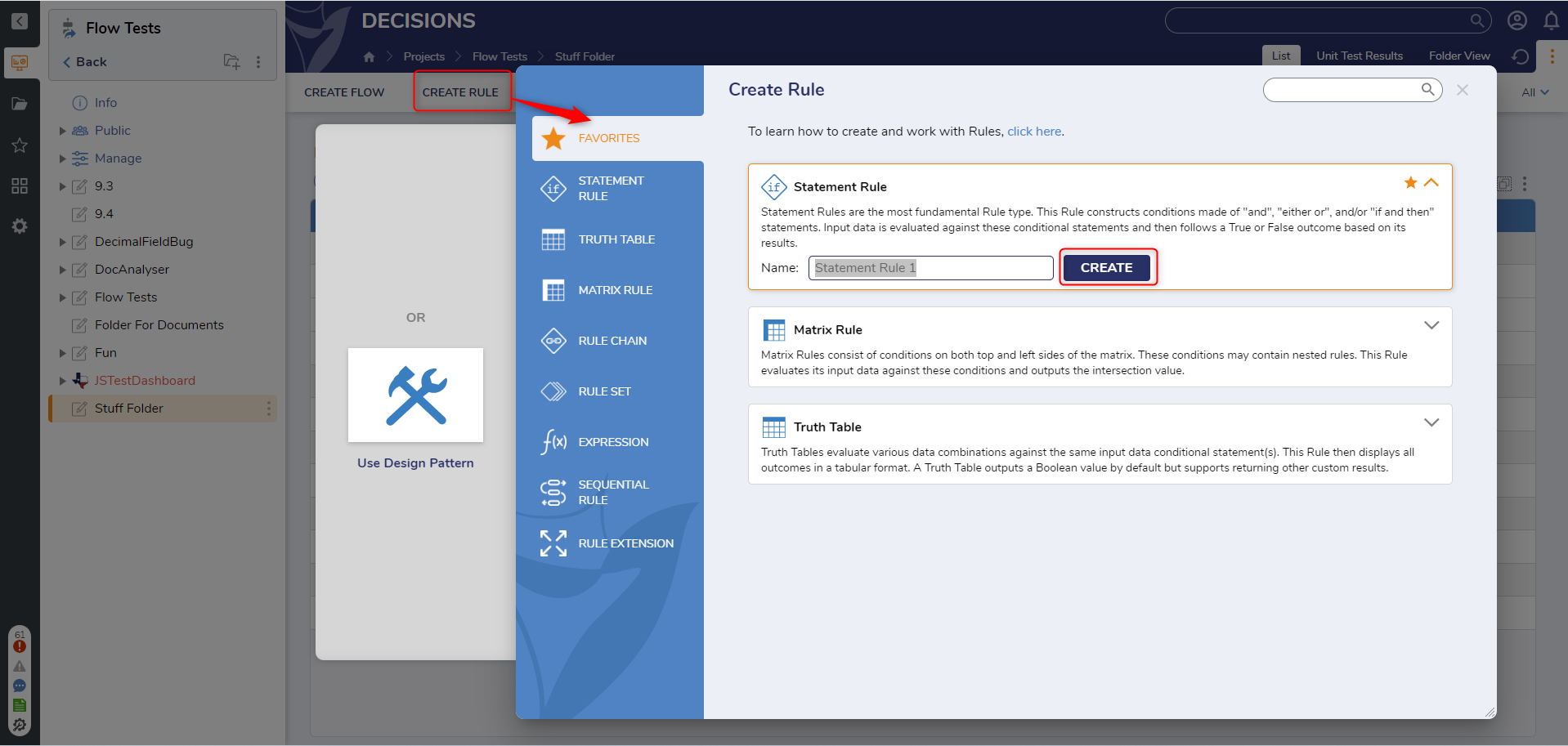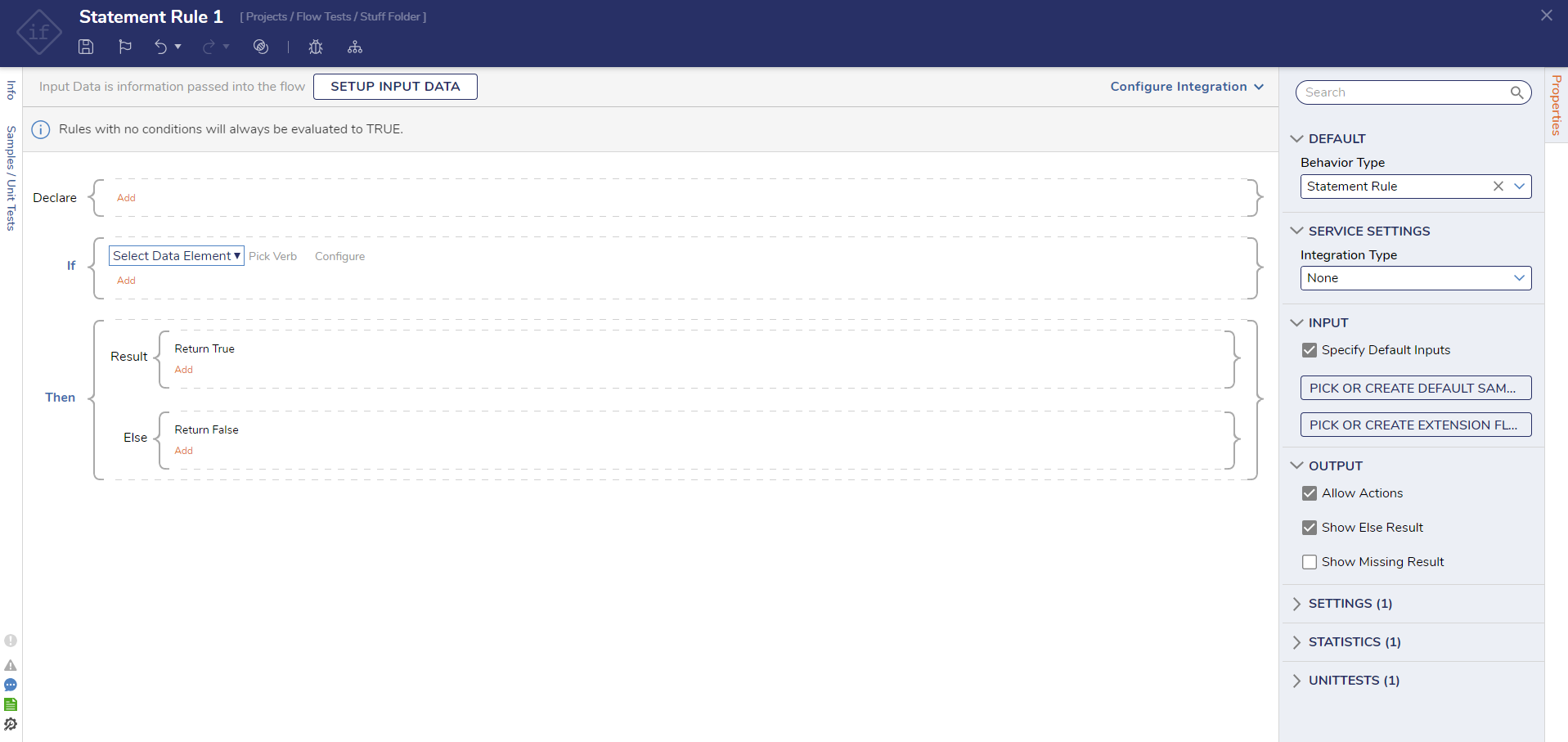Create Rules
- 03 Oct 2024
- 2 Minutes to read
- Print
- DarkLight
Create Rules
- Updated on 03 Oct 2024
- 2 Minutes to read
- Print
- DarkLight
Article summary
Did you find this summary helpful?
Thank you for your feedback!
- In a Project Folder, select CREATE RULE action from the Global Action Bar.
- The Create Rule gallery appears with various options for Rule types. The Favorites sections populates with the most commonly used Rules. Select, name, and create a Statement Rule.

- The respective designer for the Rule Type will open. For this example Statement Rule was used.

Rule Types
Below are the various Rule Types and the steps needed to create these items.
| Rule Type | Behavior |
|---|---|
| Statement Rule | A Statement Rule is the most commonly used Rule type. This Rule uses input data and pre-defined conditions based on the data type to form logistical statements that evaluate either as True or False. The Create Rules article shows how to create a Statement Rule. |
| Truth Table | A Truth Table can compare multiple input data pieces against possible value combinations for that input type. |
| External Data Truth Table | An External Data Truth Table functions similarly to a Truth Table, with row values being provided from an external source. |
| Matrix Rule | A Matrix Rule uses a column/row layout where each column and row is a Rule. Each Rule added to a column or row has a dedicated window to configure the parameters. When a Matrix Rule runs, it has an outcome result, with each outcome forming either a new column or row for the Matrix. |
| Rule Table | A Rule Table is a Rule configured similar to a Truth Table, containing configurable rows and columns. In a Rule table, however, each cell can have customized statements for the selected data element. |
| Tree Rule | A subtype of a Matrix Rule. Instead of having multiple axes, only one axis is defined. |
| Rule Chains | A Rule Chain consists of sets of rules combined in sequence and uses a Flow-like Designer, where Rules are represented by a visual icon. Each Rule in the chain produces an output that can be consumed in Rules further down the chain and can contain other Rule Types like Statements and Truth Table. |
| Rule Set | A Rule Set is a collection of Rules that evaluate the same object. These Rules can be parameterized and customized based on context, without the need to copy or rewrite them. |
| Rule Engine Extension | A Rule Engine Extension is a Rule that can be embedded in another Rule. It is required to add "anchor" input in the "Main" Rule to use Rule Engine Extension. This "anchor" input should be the same data type as the input data for the Extension Rule. |
| Sequential Rule | Sequential Rules create a Flow that can be modified to contain a sequence of simple Rules and utilized as a single step in another Flow. |
| Interceptor Rules | Interceptor Rules catch invalid data in business workflow processes, which helps to ensure that only valid data is being evaluated. These Rules take place in the process that needs to validate data using the Rule Set Engine. |
For further information on Rules, visit the Decisions Forum.
Was this article helpful?



